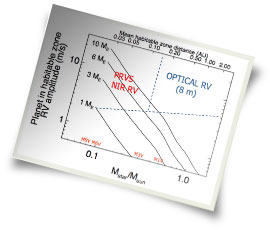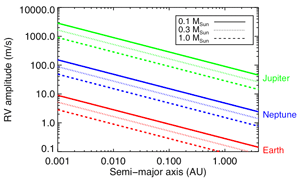
Planet Finding Science
The discovery of the Jupiter-mass planet 51 Peg B (Mayor & Queloz 1995) and the rapid detection of giant planets around several other stars (e.g. Marcy & Butler 1996) rapidly turned the search for extra-solar planets from a quirky backwater into a flourishing mainstream activity. In the last 5 years the field has matured into a complex and vibrant discipline that now lies at the heart of astronomical research. While we are still not yet sensitive to the presence of our Solar System around any Solar type star, the number of exoplanets discovered now stands at over 200 including at least 20 multiple planet systems. They have now been discovered in most environments where a concerted effort has been made. In particular, they have been discovered with a wide range of orbital parameters around most spectral types and even around pulsars. It thus seems they form easily and are rather robust to stellar evolution. There are many potential avenues for exoplanet research that are being explored in order to ultimately better understand our Solar System, the Earth and our human race in the context of planetary systems more generally.
The “Doppler Wobble” technique has played the dominant role in foundation of this new field. Surveys using this method have discovered almost all the planets known within 200 pc, and the vast majority of gas-giant planets found within 3 AU of their host stars. Other techniques, such as searches for planetary transits and gravitational micro-lensing events have so far had limited success, although many of these programs have begun only recently. Doppler searches, however, provide the most accurate estimates of key exoplanet properties: minimum planet mass; orbital period; orbital semi-major axis; and eccentricity. They also differ from photometric transit and micro-lensing surveys because they specifically target nearby well characterised stars. They provide robust minimum masses and orbital parameters and allow for critical and independent verification by other groups and techniques. One of the key results coming out of the Doppler surveys so far is that low-mass planets are much more common than high-mass ones with dN/dM~M-1.18, and exoplanets form with masses at least as low as Neptune. Improvements in the efficiency and sampling of searches at optical wavelengths promise long-term precisions of ~0.5 m/s and ~5 Earth masses" detections around solar-type stars. While this is likely to be the lower mass limit for CCD-based of solar type surveys until larger telescopes become available, it is feasible to survey lower mass primaries to achieve a corresponding smaller mass limit. Thus the lowest mass planets have been found around M dwarfs (e.g., GJ876d: 7 Earth masses Rivera et al. 2005), with detections down to a few Earth masses" feasible around mid-M spectral types.

RV amplitude as a function of separation for planets around host stars of various masses. Different colours correspond to different planet masses, while different line styles correspond to different host-star masses.
This approach to extend RV surveys to even lower-mass planets, well into the realm of terrestrial planets, is to search around lower-mass primary stars since the RV reflex signal will be larger for lighter primary stars (see above). Circumstellar disks appear to be common around young (few Myr) low-mass stars and brown dwarfs (e.g. Liu, Najita & Tokunaga 2003), naturally raising the question of whether these objects can form planets and, if so, how their planetary systems compare to the well-studied systems around solar-type stars. Since 8 out of 9 stars in a volume-limited sample are M dwarfs, it is imperative to assess the planet-bearing frequency of what may be the most common sites of extra-solar planetary systems. In fact GJ876d and the microlensing detection of the distant 5 Earth-mass exoplanet OGLE-2005-BLG-390Lb (Beaulieu et al. 2006) shows that exoplanets approaching terrestrial-mass do exist. Thus a major new frontier in exoplanet research is to find and characterise the local examples. Apart from their proximity M dwarfs are particularly interesting because they offer the possibility to detect terrestrial mass planets in their habitable zone. Optical RV surveys are restricted to stars more massive than about M4 dwarfs (~0.3 Solar masses). Very nearby, lower mass M dwarfs are optically too faint. One way to search for planets around later type M dwarfs and even brown dwarfs is to make radial velocity measurements where the stars are bright, that is, in the infrared.
For PRVS project we have examined the scientific appeal of doing precision RV surveys in the NIR and based on the radial velocity information in M dwarf spectra formulated a potential survey that might be carried out. Apart from precision radial velocities we envisage an instrument that has sufficient throughput and wavelength coverage to be of interest to the wider Gemini community and thus give details of other cutting-edge science that might be conducted.